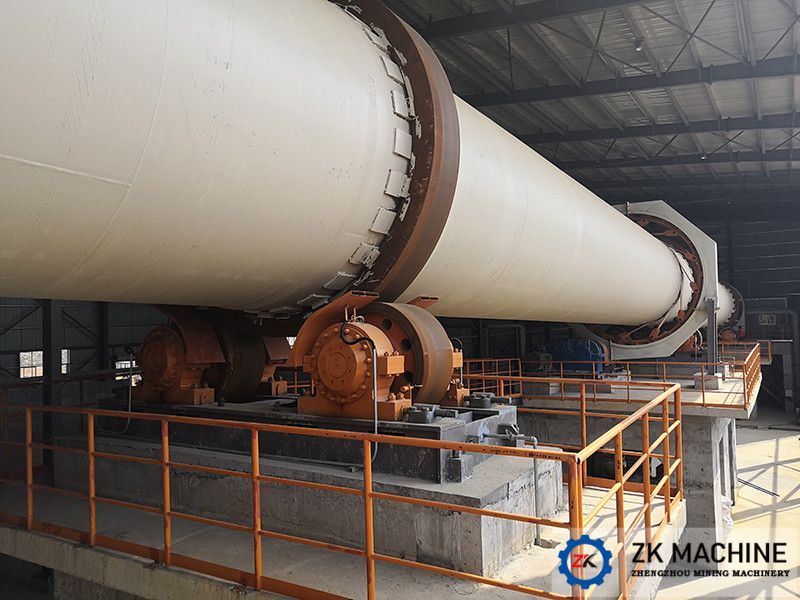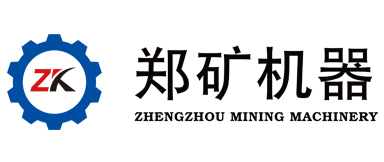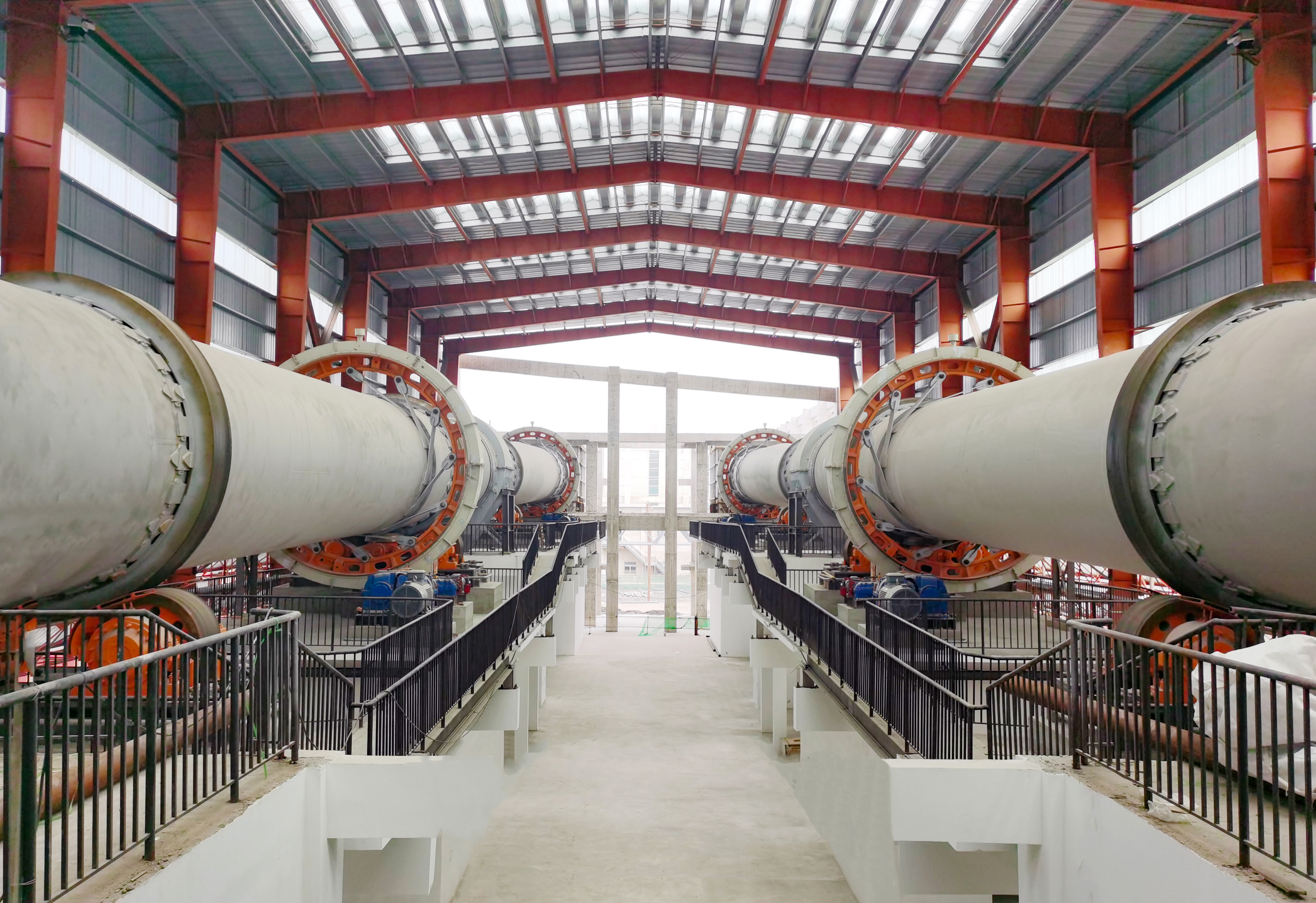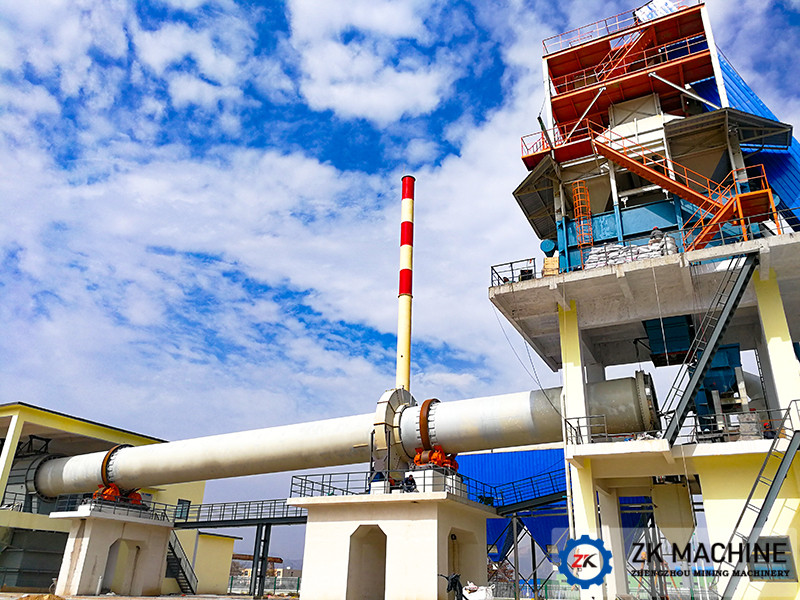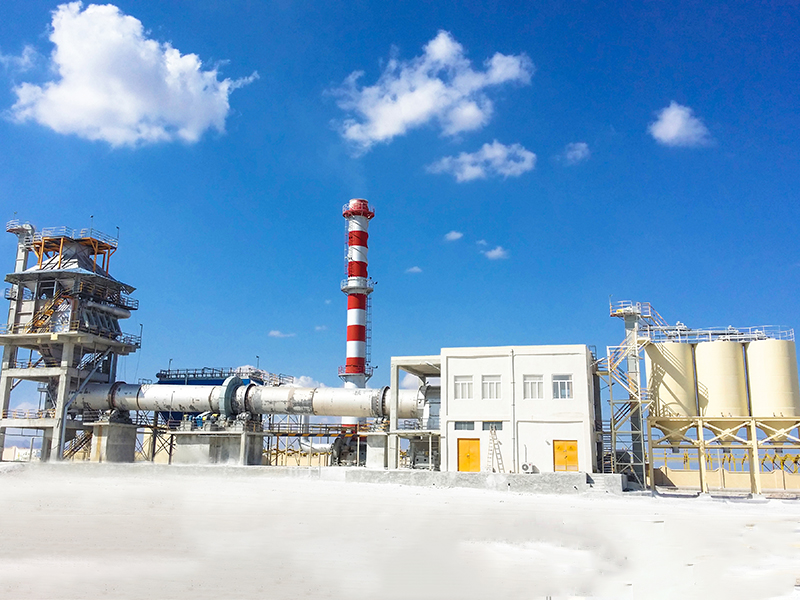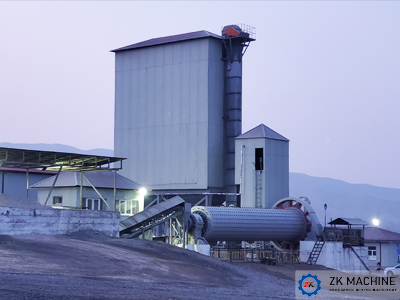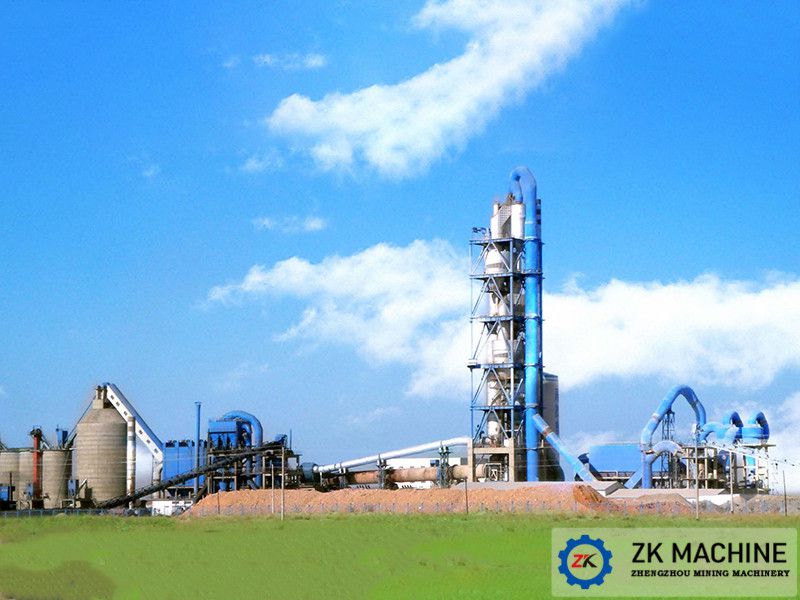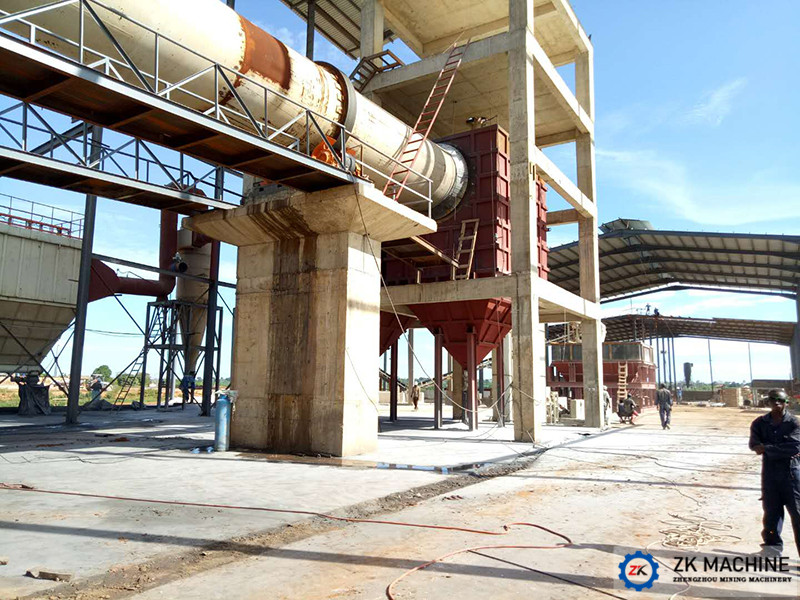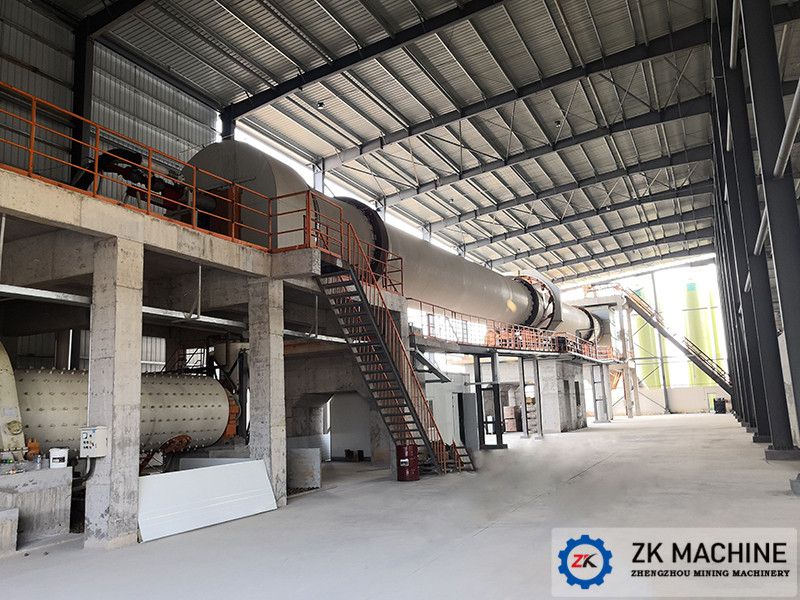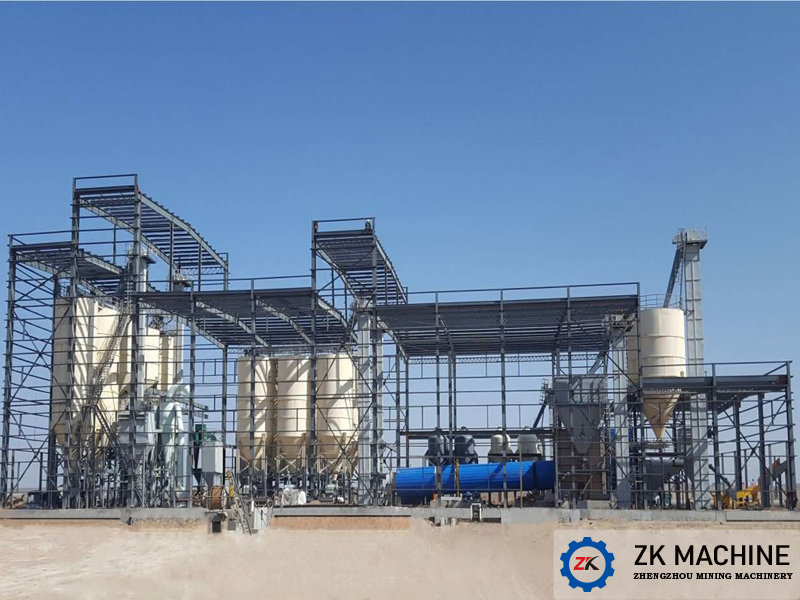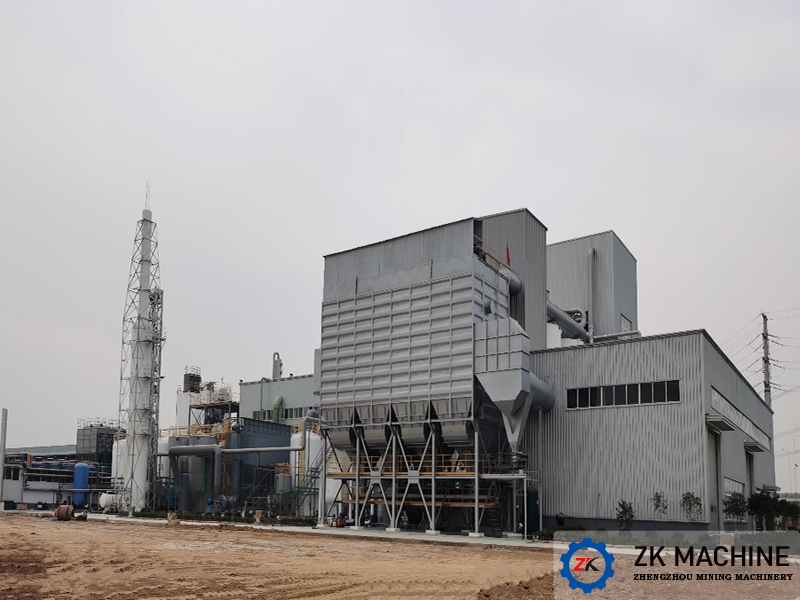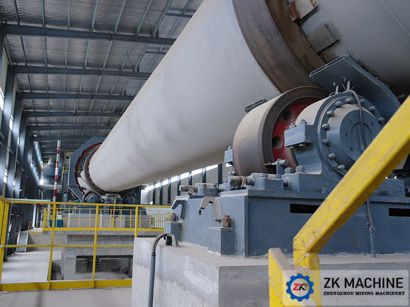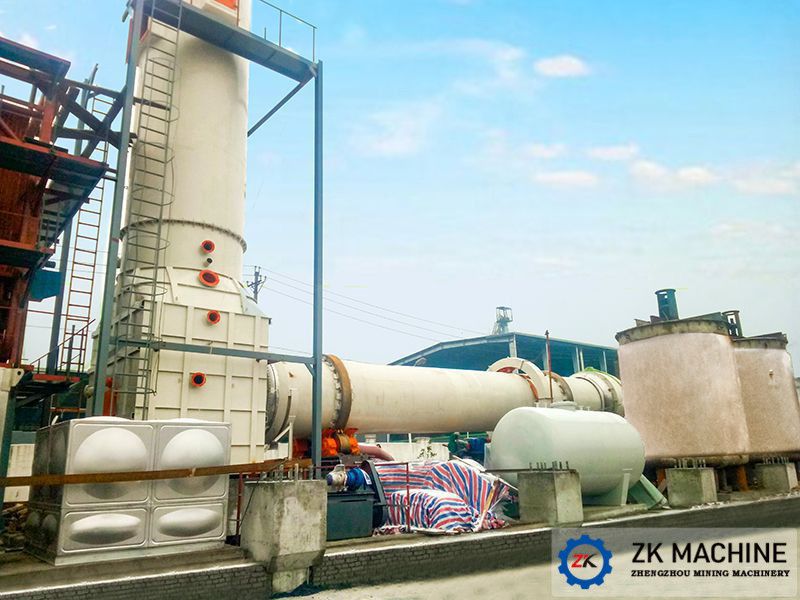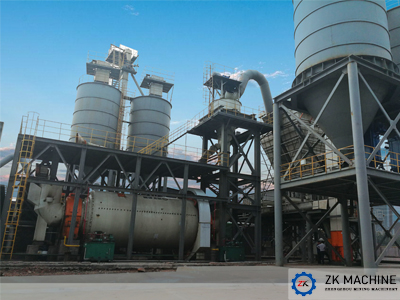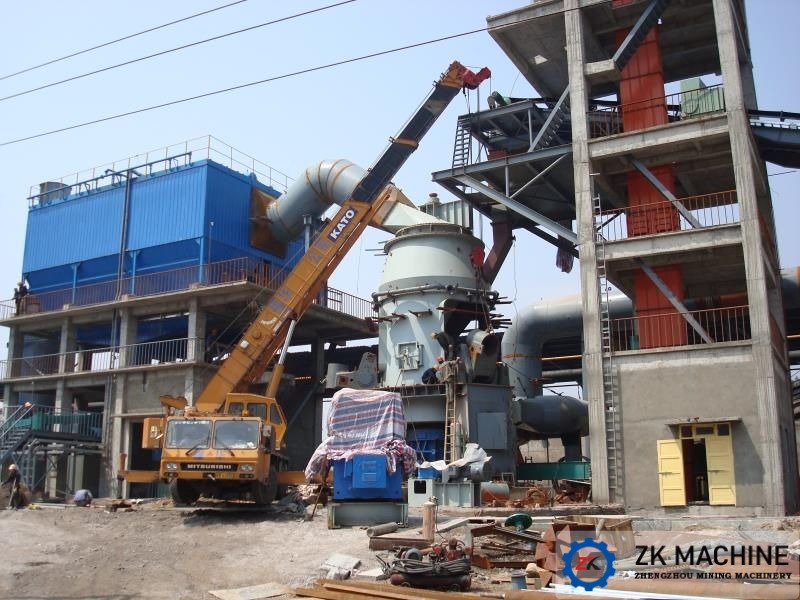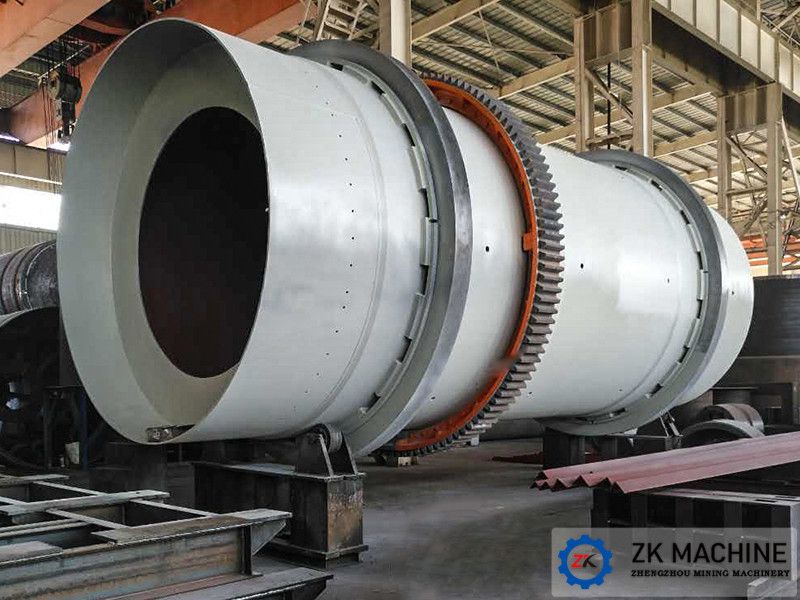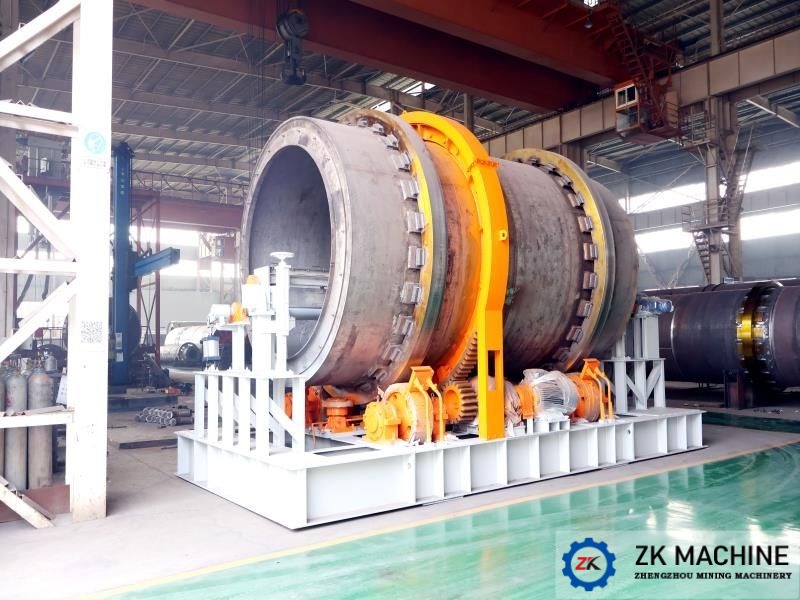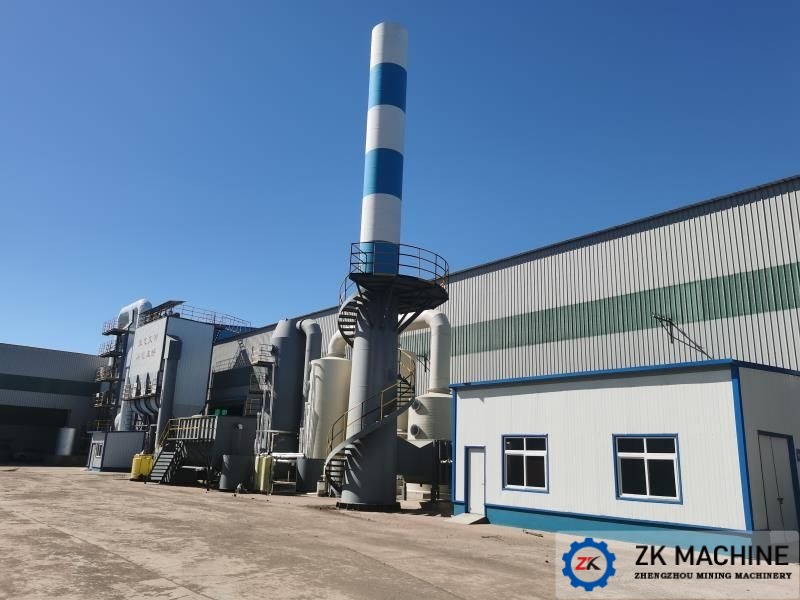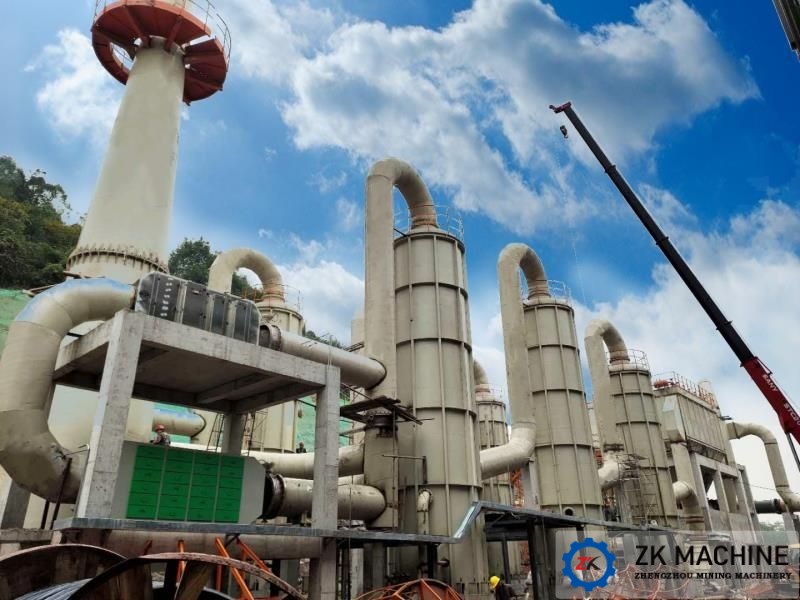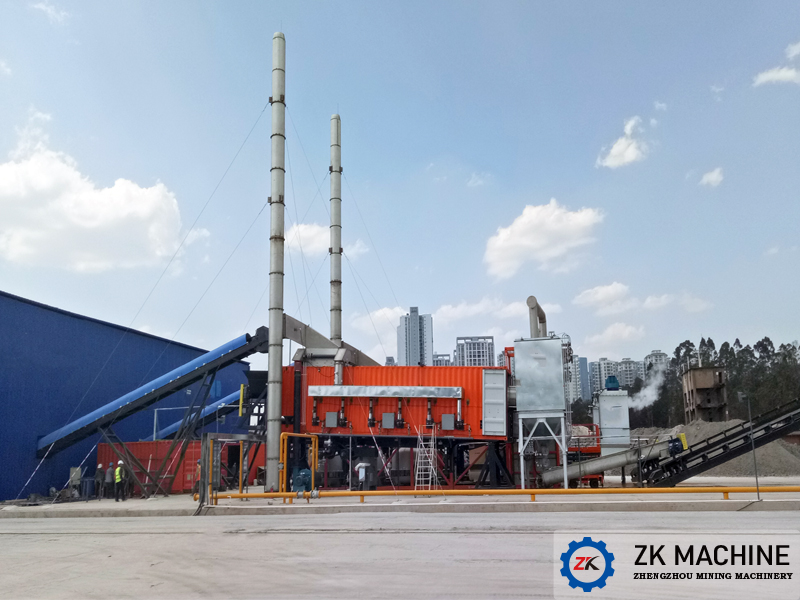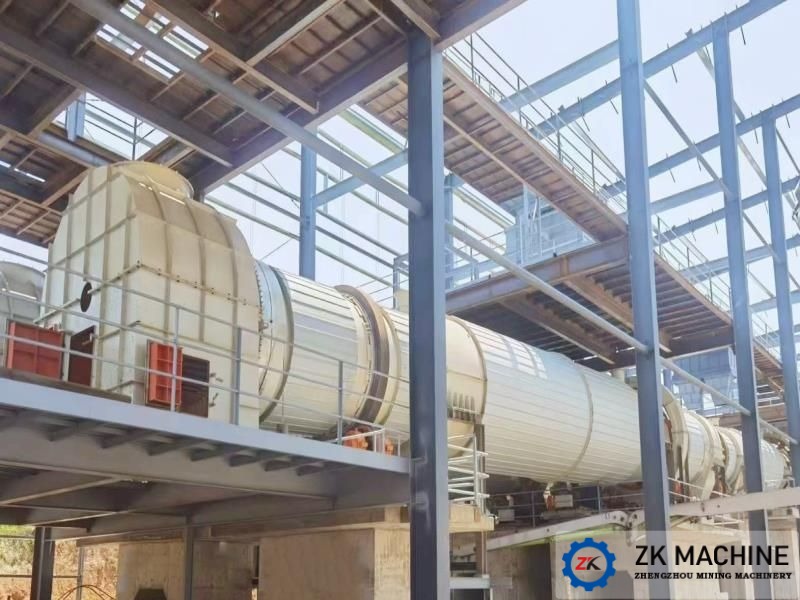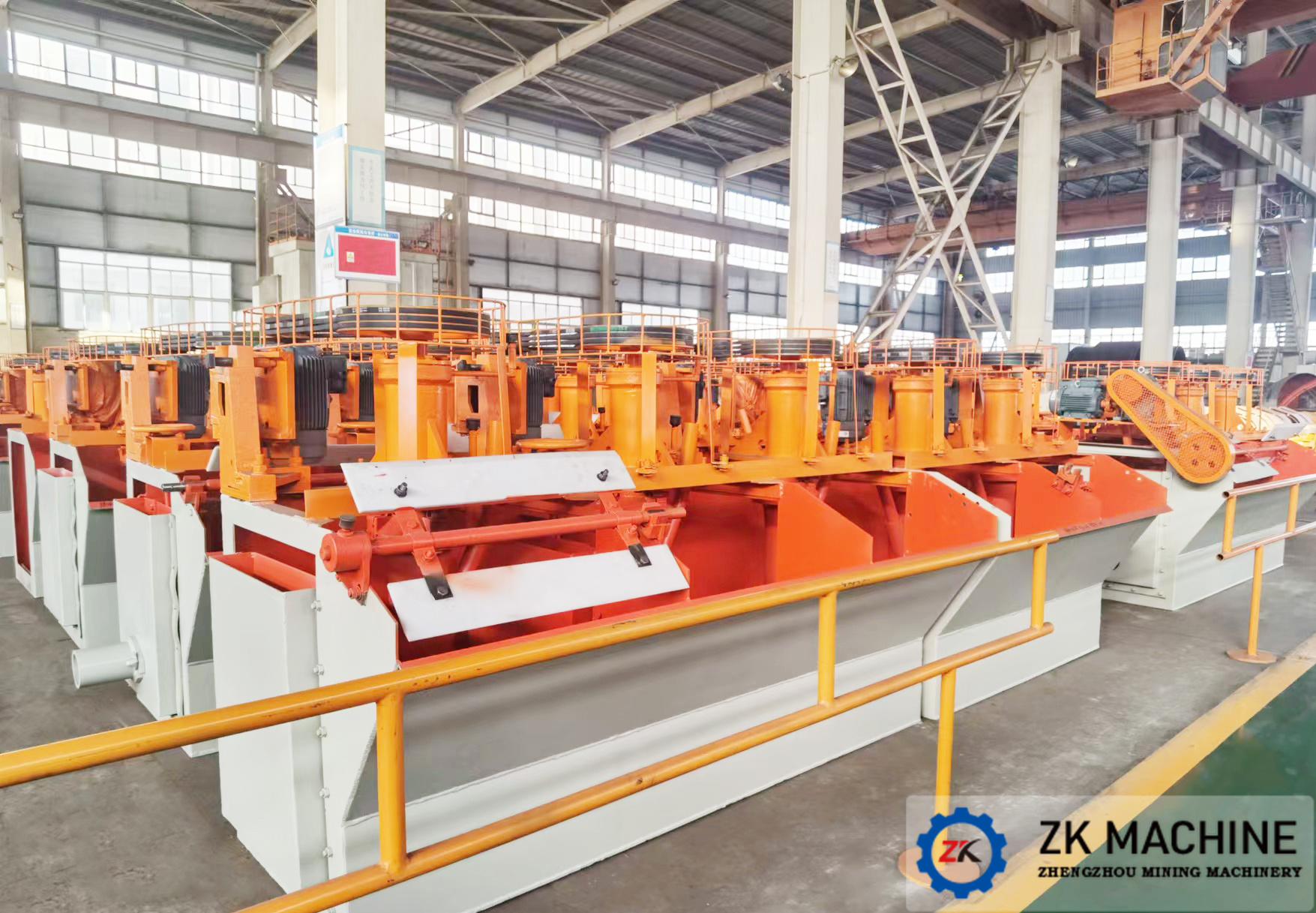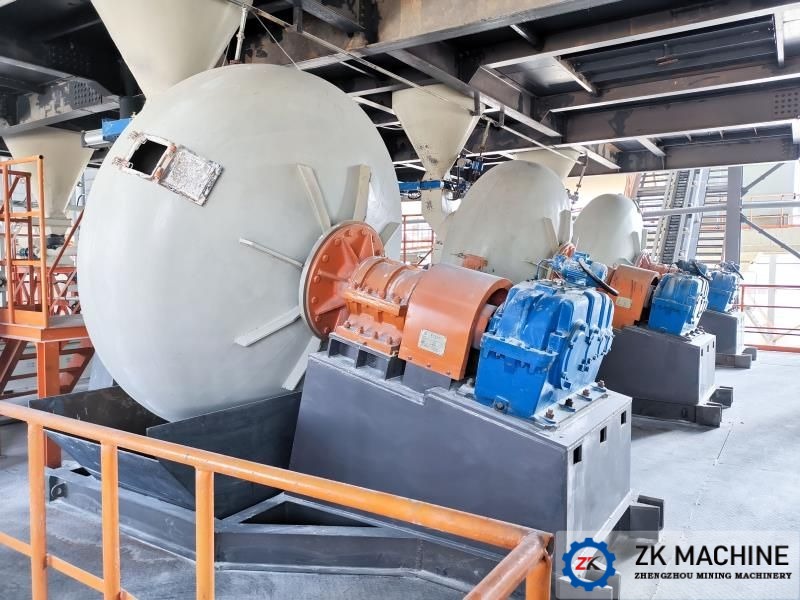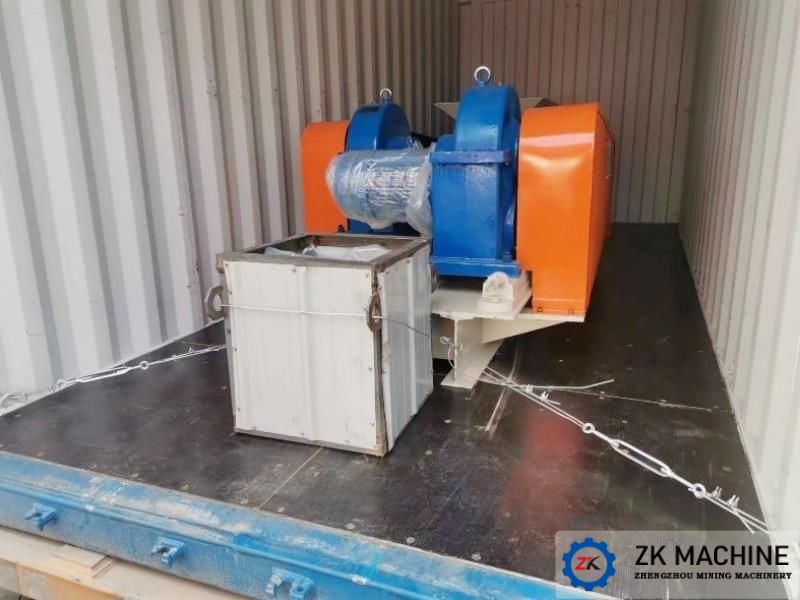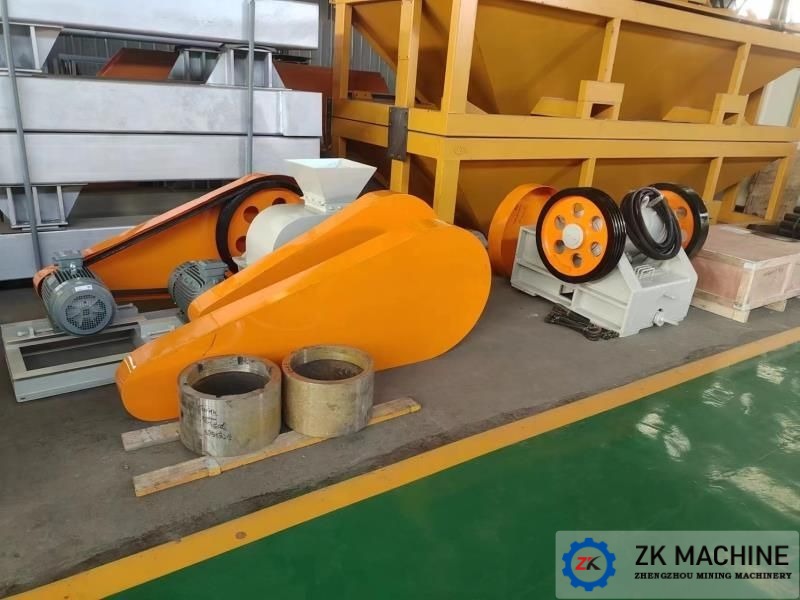Lithium Production Process
1. Roasting and dipping section
Conversion roasting: spodumene concentrate is manually sent from the concentrate silo to the bucket elevator and lifted to the concentrate bin, and then added to the kiln tail of the lithium rotary kiln through the disc feeder and screw feeder, and the kiln tail is used to preheat The concentrate is dried by high-temperature gas in the calcination section, and the concentrate is converted into β-type spodumene (tetragonal system) by crystal transformation and roasting at a temperature of about 1200 °C in the calcination section. , the density is 2400kg/m3, namely the baking material), and the conversion rate is about 98%.
Acidizing roasting: the roasted material is cooled down by the cooling section and discharged from the kiln head, and then is naturally cooled and ground by a ball mill to a particle size of 0.074mm or more, and then transported to the acidizing roasting kiln tailings silo, and then passed through the feeder and The screw conveyor is added into the acid mixing machine and mixed with concentrated sulfuric acid (above 93%) in a certain proportion (the concentrated sulfuric acid is based on the excess of 35% of the lithium equivalent in the baking material, and each ton of baking material needs about 0.21t of concentrated sulfuric acid), and then add acidizing roasting. In the chamber, at a temperature of about 250 to 300 ℃, the closed acid roasting is carried out for 30 to 60 minutes. Li2O is combined with SO42- to form water-soluble Li2SO4 to obtain acidified clinker.
Slurry leaching and washing: The clinker is cooled and slurried to dissolve the soluble lithium sulfate in the clinker into the liquid phase. In order to reduce the corrosion of the solution to the leaching equipment, limestone slurry is used to neutralize the residual acid in the clinker, and the pH value Adjust to 6.5-7.0, and remove most of the impurities such as iron and aluminum at the same time, the leaching liquid-solid ratio is about 2.5, and the leaching time is about 0.5h. The leaching slurry is filtered and separated to obtain the leaching solution, which contains about Li2SO4 100g/L (Li2O 27g/L), and the filter cake is the leaching residue with a moisture content of about 35%. The leaching residue adhesion solution contains lithium sulfate. In order to reduce the loss of lithium, the leaching residue is washed by reverse stirring, and the washing solution is returned to the slurry for leaching.
Leachate purification: When the baking material is acidified and roasted, in addition to alkali metal reacting with sulfuric acid to produce soluble corresponding sulfate, other iron, aluminum, calcium, magnesium, etc. also react with sulfuric acid to produce corresponding sulfate. Although part of the impurities in the clinker can be removed during the leaching process, the remaining impurities remain in the leaching solution and need to be purified and removed to ensure product quality. The leaching solution is purified by alkalization and decalcification. The leaching solution is alkalized with an alkalizing agent lime milk (containing CaO 100-150g/L), and the pH value is increased to 11-12, so that magnesium and iron are hydrolyzed into hydroxide precipitates. Then use sodium solution (containing Na2CO3 300g/L) to react with calcium sulfate to produce calcium carbonate precipitation, so as to remove the calcium in the leaching solution and the calcium brought by the alkalizing agent lime milk. After the alkalization and decalcification slurry is separated from liquid and solid, the obtained solution is purified liquid, the ratio of calcium to lithium is less than 9.6×10-4, and the filter cake is calcium slag, which is returned to sizing and leaching.
Evaporation and concentration of purification liquid: the purification liquid cannot be directly used for lithium precipitation or lithium chloride production due to the low concentration of lithium sulfate and low lithium precipitation rate. , so that the concentration of lithium sulfate in the concentrated solution reaches 200g/L (containing Li2O 60g/L). The concentrated liquid is separated by pressure filtration, the filtrate is the finished liquid for use in the next process, and the filter cake is returned to the slag for leaching.
2. Lithium production section
The completion liquid and the soda ash solution (containing Na2CO3 300g/L) were added to the evaporation lithium precipitation tank, and the lithium precipitation was carried out by evaporation (constant temperature 2h after boiling). The lithium was precipitated due to the low solubility, and the lithium precipitation rate was about 85%. After lithium precipitation, use a centrifuge to separate out primary lithium (containing less than 10% of filtrate) and primary precipitation lithium mother liquor while hot.
The primary lithium precipitation mother liquor contains a large amount of sodium sulfate and higher lithium sulfate (about 15% of the total), and soda ash (containing Na2CO3 300g/L) is added to carry out secondary precipitation of lithium to obtain secondary crude product and secondary mother liquor. Mother liquor After neutralization with acid and adjusting pH with sodium hydroxide, the by-product anhydrous sodium sulfate and the mother liquor of sodium precipitation are separated by evaporation, crystallization and centrifugation. The sodium precipitation mother liquor is returned to prepare a mother liquor.
The primary crude lithium and the secondary crude product attachment liquid contain impurities such as Na2SO4, and then use purified water to stir and wash at about 90 ° C, and the washing liquid is sent to the preparation of alkali. It is dried by a far-infrared dryer, and the iron wire scraps and other sundries dropped by the dryer are removed by magnetic separation.
This project mainly increases the production capacity of battery-grade lithium. From the perspective of the overall production process, battery-grade lithium and industrial-grade li are basically the same. The difference is that the process control conditions of the two sections of evaporation and precipitation are different, that is, when the purification liquid is evaporated and concentrated, the specific gravity of the finished liquid at the end point is measured by a hydrometer and the flame The photometer measures the Li2O concentration in the finished liquid to ensure that the final concentration of the finished liquid is within the range of process requirements; when lithium is deposited, the different openings of the adjustment valve are displayed through the electromagnetic flowmeter to control the feeding speed, and the frequency converter is used to adjust the motor speed to control the stirring speed of the stirrer . The above process control conditions are all key technologies of the company.
3. Anhydrous lithium chloride section
The completed liquid obtained in the baking and leaching section is subjected to metathesis reaction with calcium chloride solution, and after the reaction is completed, CaSO4·2H2O is separated and sent to be processed to obtain CaSO4 products. After separation, a LiCl dilute solution is obtained, and β-type-active Al2O3, Na2CO3 and NaOH solutions are added in turn to remove SO42-, Ca2+, Mg2+ and other impurities in the LiCl dilute solution, and then the concentration of LiCl is increased to 400-500g/L by evaporation and concentration. , carry out cooling filtration, separate solid NaCl, and obtain LiCl concentrated solution. The concentrated LiCl solution is transported to the refining kettle, and the company's self-produced refining agent (the company's patented technology, inorganic components, no toxic and harmful heavy metals) is added to carry out a replacement reaction with Na+, and the Na+/LiCl ratio in the reaction end solution is controlled to be less than 30ppm. After separation, the LiCl completion liquid is obtained, and finally, the complete liquid is spray-dried to obtain an anhydrous lithium chloride product with uniform particles.
